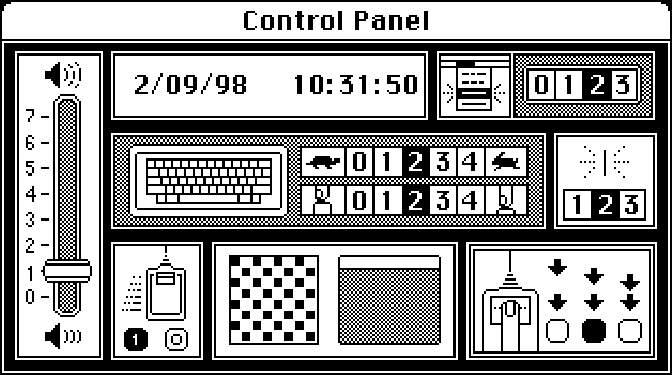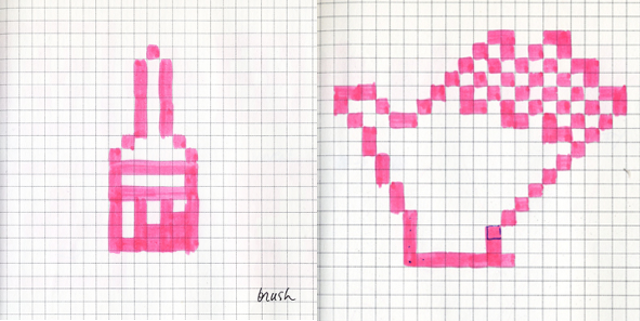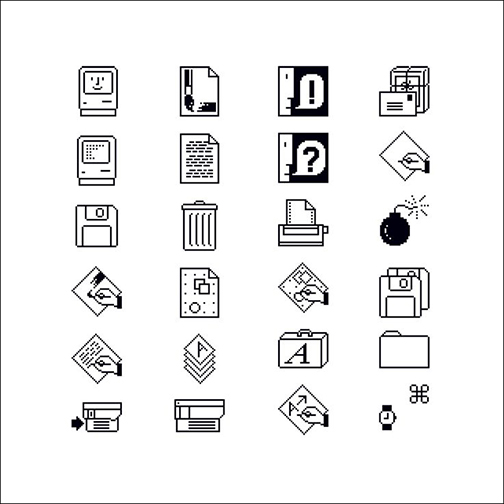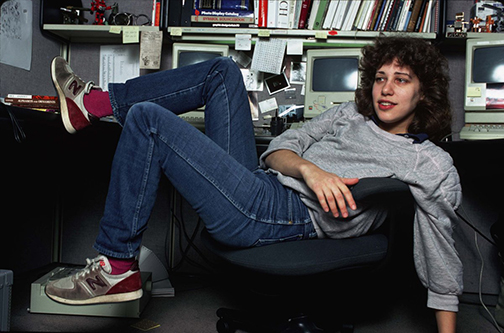In 2021, the words “internet” and “computer” are not uncommon to the average person. Younger generations, such as Gen-Z and Millenials, can easily forget there was a world that existed before the internet. Our world is heavily digitized, especially during a global pandemic. Concerts, school, and work can be enjoyed and done virtually today. Hence, one can easily overlook iconography, an important yet undervalued role to any computer system. Susan Kare was always interested in art- she focused on photosetting in her internship in highschool. As many artists, she worked pro-bono to build her portfolio. She designed posters, brochures, and even holiday cards. After graduating college, she began her career as a museum curator for the Fine Arts Museums of San Francisco. Little did she know her life would change forever only a few years later.

In 1982, Kare received a phone call from a high school friend, Andy Hertzfeld. He wanted her to design hand-drawn icons for the new Macintosh computer. Given that she lacked computer graphic experience, Kare was wary about the new project. In addition, she would only be receiving a computer in exchange for the work. A story too many artists and freelancers have experienced before. To prepare, she relied on grid notebooks and graph paper to begin her creative process. Kare mocked up 32×32 pixel graphics of the cut, paste, and paintbrush commands we recognise today as the scissors, finger, and brush icons. Becoming more interested in computer graphics, she decided to interview for a full-time position at Apple. Kare was hired in 1983 as a Mac Artist – realising her childhood dreams of making art a full-time career.

Working as a beginner computer artist, she relied on Twiggy ( An Apple disk-drive prototype – Revise) to continue her skills. She improved and moved into advanced graphic tools. She was the only graphic designer in a team full of programmers; However, she worked long hours each day. She experimented with different tools, sizes, and graphics. In 1984, she designed the primary visual graphic laungur for the new Macintosh. Some of Kare’s typefaces and icons were patented, making her a pioneer in Mac’s graphic user interface (GUI). Her hard work led her to become Apple’s creative director In Apple Creative Services. However, Her time at Apple only lasted a little while. Nonetheless, Kare is still remembered as the designer “who gave the Macintosh a smile” (Lange).

“I learned a lot about the cumulative value of attention to detail from Steve [Jobs], and about pushing the limits of a medium. I still think about his philosophy of not showing too much information at once and the value of simplicity in visual messaging” – Susan Kare

In 1988, after leaving Apple, Kare opened up her design studio: Susan Kare Design. Since then, Kare has expanded her horizons – from graph paper to advanced computer softwares. Even with newer technology changes, she still focuses on her simplistic and refined style. From 2006-2010, Kare worked on digital content for Facebook (Crockett). Today, she continues to make digital prints. Additionally, Kare has worked for companies such as Pinterest, IMB, and Sony. Nonetheless, in a world where the internet is part of a common routine, Kare’s iconography continues to stand as its own.
For additional information on the design, history, and practice of Susan Kare, please visit:
AIGA – https://www.aiga.org/medalist-susan-kare
Susan Kare: Limited Editions – https://kareprints.com/
The New Yorker – https://www.newyorker.com/culture/cultural-comment/the-woman-who-gave-the-macintosh-a-smile
Medium Magazine – https://medium.com/fgd1-the-archive/original-macintosh-icons-susan-kare-1984-14ac5112c172
Smithsonian Institute – https://invention.si.edu/susan-kare-iconic-designer
Quartz Magazine – https://qz.com/1666437/mac-icon-designer-susan-kare-explains-the-inspiration-for-her-designs/
Essay written by Emily “Emilia” Torres, a graphic design major with high interest in social media and viral advertising. In her spare times, Emily enjoys eating cupcakes while she lounges in the sun reading the latest fashion magazines or playing Animal Crossing.


